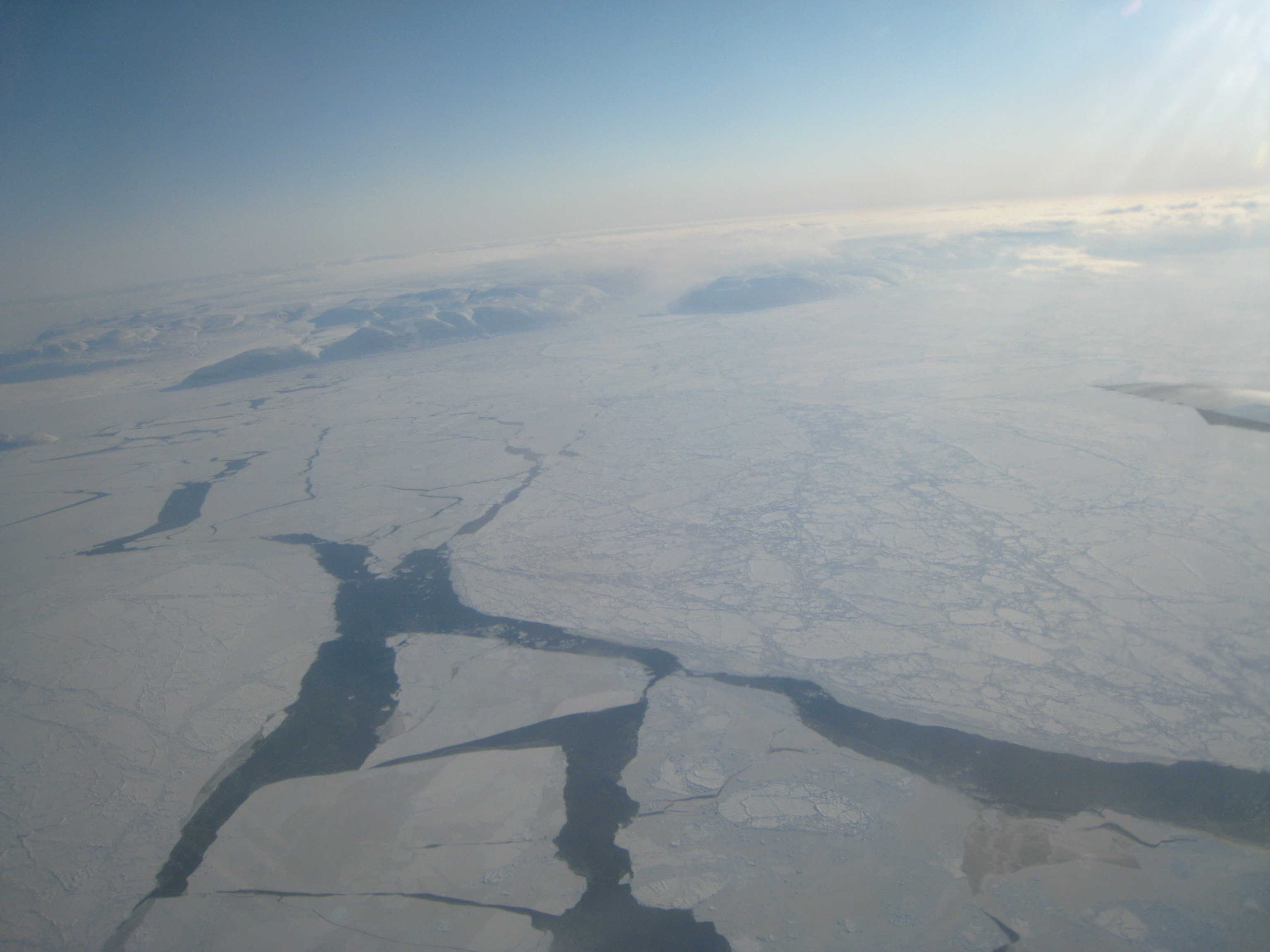UAF joins national air quality research with Interior Alaska site
Rod Boyce
907-474-7185
Oct. 7. 2021
A site near Delta Junction will be the Alaska research location in a $12 million multistate project to determine the content of airborne particulate matter.
The Alaska site, one of 12 around the nation, will be overseen by assistant professor Jingqiu Mao of the Őņń∑ ”∆Ķ Geophysical Institute and College of Natural Science and Mathematics. Professor Nga Lee ‚ÄúSally‚ÄĚ Ng of the Georgia Institute of Technology is the lead investigator.
The National Science Foundation-funded project, announced Sept. 27, will establish the nation’s first long-term network of monitoring stations across 10 states. The network will provide data every one to 15 minutes about the chemical makeup of atmospheric aerosols and the size of the aerosol particulates, including fine particulate matter known as PM2.5. Europe and China have such networks.

Arctic haze appears over northern Alaska in 2008 as photographed from a NASA aircraft.
‚ÄúThis is about what the United States is going to do for air quality in the next 10 to 20 years,‚ÄĚ Mao said.
The aim of the Atmospheric Science and Chemistry Measurement Network, according to the project proposal, is to learn the sources, chemistry, dynamics, chemical properties and physical properties of aerosols. That will allow scientists ‚Äúto accurately assess and predict their impacts on climate, human health, visibility, and ecosystems in a changing environment.‚ÄĚ
Natural and human-made aerosols, which are tiny particles of solid matter or liquid suspended in the atmosphere, scatter solar radiation. That can alter the Earth’s energy balance and affect cloud formation. Aerosols also provide the foundation for unwelcome chemical reactions that can lead to a variety of health issues for humans.
The United Nations’ Intergovernmental Panel on Climate Change has determined that aerosol effects are the single largest source of uncertainty in understanding climate change.
‚ÄúPeople often hear of PM2.5, but they do not know what chemical compounds are in the PM2.5 in their area,‚ÄĚ Mao said, referring to particles of 2.5 micrometers, about 30 times smaller in diameter than the average human hair.
‚ÄúHaving test sites across the country will tell us what's in the PM2.5 every hour so we can tell where the aerosols are coming from,‚ÄĚ he said. ‚ÄúPeople can then decide if they want to have a mitigation strategy such as reducing emissions from cars or power plants.‚ÄĚ
The new network will improve upon the several aging, independent monitors established 10 to 30 years ago.
Each site will have four instruments: one for trace metals, one for carbon emissions, one for aerosol size distribution and concentration, and one for non-refractory aerosols, those that vaporize rapidly only at extremely high temperatures.
Aerosol monitors, which will be manufactured in the coming months, will be placed at the following locations in addition to the site near Delta Junction:
Port Angeles, Washington; Los Angeles-Pico Rivera, California; Riverside County, California; Joshua Tree National Park, California; the Wyoming portion of Yellowstone National Park; Denver area, Colorado; Houston, Texas; Lawrenceville, Pennsylvania; Queens College, New York; DeKalb County, Georgia; and Great Smoky Mountains National Park, Tennessee.

Air quality monitoring instruments will be placed at an existing research site located in this boreal forest just south of Fort Greely off the Richardson Highway.
The Delta Junction site, just south of Fort Greely, was chosen for a few reasons, Mao said. It’s a small town in a boreal forest with little human interaction, and the project already included a number of urban sites. Delta is home to an existing National Science Foundation test site, part of the National Ecological Observatory Network, at which the new project will be located.
The site also will allow examination of , caused by air pollutants carried across the top of the globe into Alaska from middle-northern latitudes, primarily Eurasia.
‚ÄúWe want to characterize that air mass,‚ÄĚ Mao said. ‚ÄúAnd to focus on that, we do not want it to be mixed with local air pollution.‚ÄĚ
The project could also lead to improved air quality forecasts and help interpret satellite observations of air pollution because of the rapid availability of data.
‚ÄúThis is an incredibly exciting opportunity,‚ÄĚ said Ng, a professor in Georgia Tech‚Äôs School of Chemical and Biomolecular Engineering and School of Earth and Atmospheric Sciences.
‚ÄúThis will contribute to building a foundation to define future regulations in the U.S. for protecting public health, as aerosol sources and properties continue to evolve in a changing world.‚ÄĚ
Other institutions involved include 10 universities and the National Center for Atmospheric Research.
ADDITIONAL CONTACTS: Jingqiu Mao, Geophysical Institute, 907-474-7118, jmao2@alaska.edu; Nga Lee (Sally) Ng, Georgia Institute of Technology, 404-385-2148, ng@chbe.gatech.edu; Jason Maderer, director of communications, Georgia Institute of Technology College of Engineering, 404-276-1643, maderer@gatech.edu
NOTE TO EDITORS: Photographs are available at
043-22


